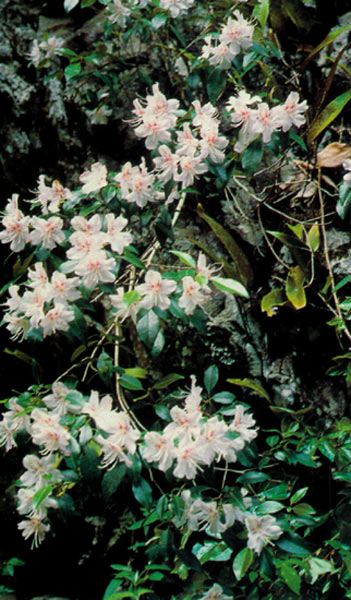Rhododendron uwaense
Billeder af Rhododendron uwaense
Beskrivelse
R. uwaense (Azaleastrum). Vildtvoksende i Japan på øen Shikoku og er sjælden her.
Hans Eiberg
Artikel i Rhododendron Species 2019 (RSBG) p 36.
Info page 54
Article; Seed germination characteristics of an endangered evergreen broadleaf tree, R. uwaense
Abstract
The importance of plantation forests in the conservation of endangered species has increased over time. R. uwaense is a small, endangered, evergreen broadleaf tree first described in 1984. This species only occurs in plantations and secondary forests on a small watershed in Shikoku, western Japan.
Between the first observation of the species and 2017 no forest management practices had been conducted within the species’ range; however, the landowner began thinning operations in 2017. If this species has light requirements for germination as like some Rhododendron species, forest management practices that improve light availability may facilitate the establishment of the species.
To reveal the germination characteristics and the appropriate storage conditions and length for R. uwaense seeds, we assessed differences in the germination of seeds stored under different conditions (indoor, outdoor, moist chilled and dry chilled) and for varying durations (45, 90, 136, 180, 225 days) by the gradually increasing and decreasing temperature method. Germination was higher in the increasing temperature regime. This trend is common among plant species with physiological dormancy that is broken by chilling, allowing seeds to germinate in the spring. Seeds that were collected during the dispersal period germinated immediately after collection, but germination required the presence of light. Seeds stored indoors for more than 180 days failed to germinate. Seeds stored dry chilled for 225 days still maintained a germination rate of more than 60%. Improvement of forest floor light conditions and seed storage under dry chilled conditions are recommended for seed germination and propagation.



